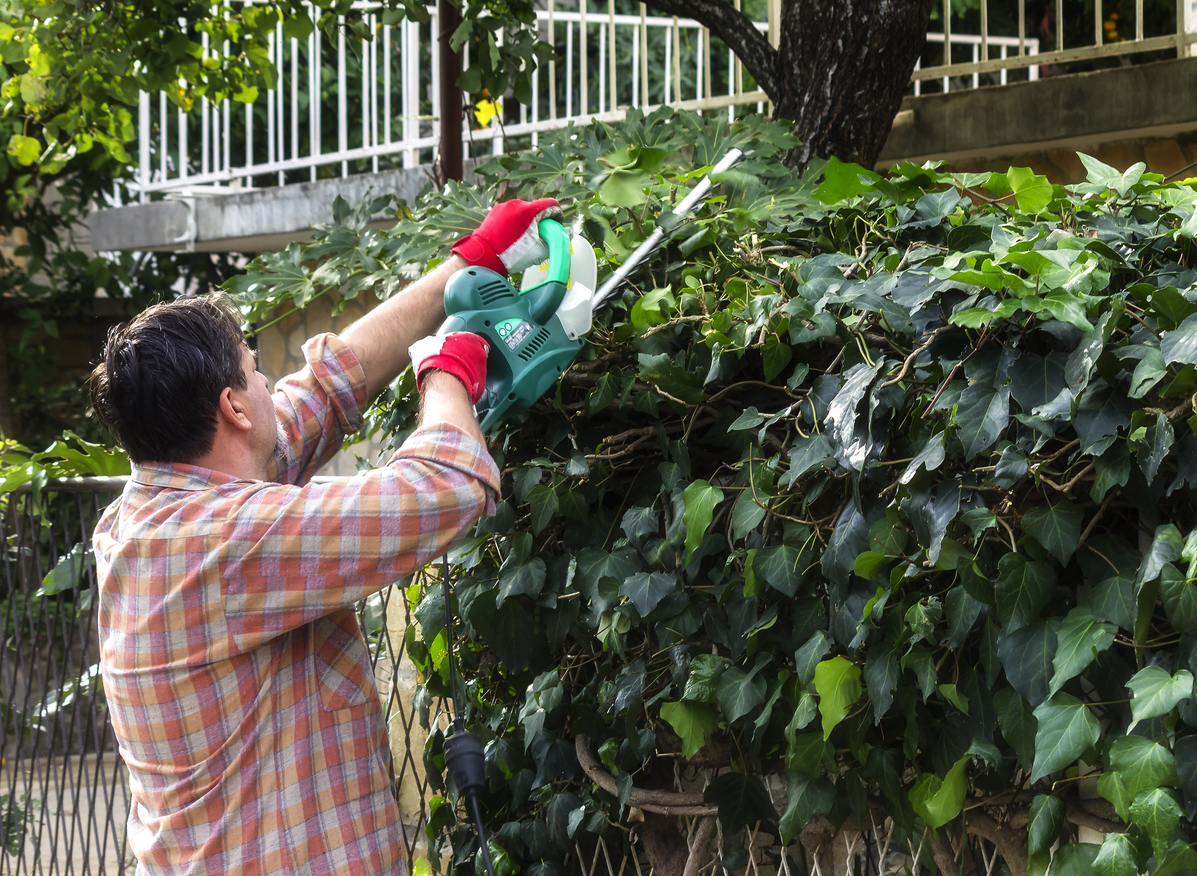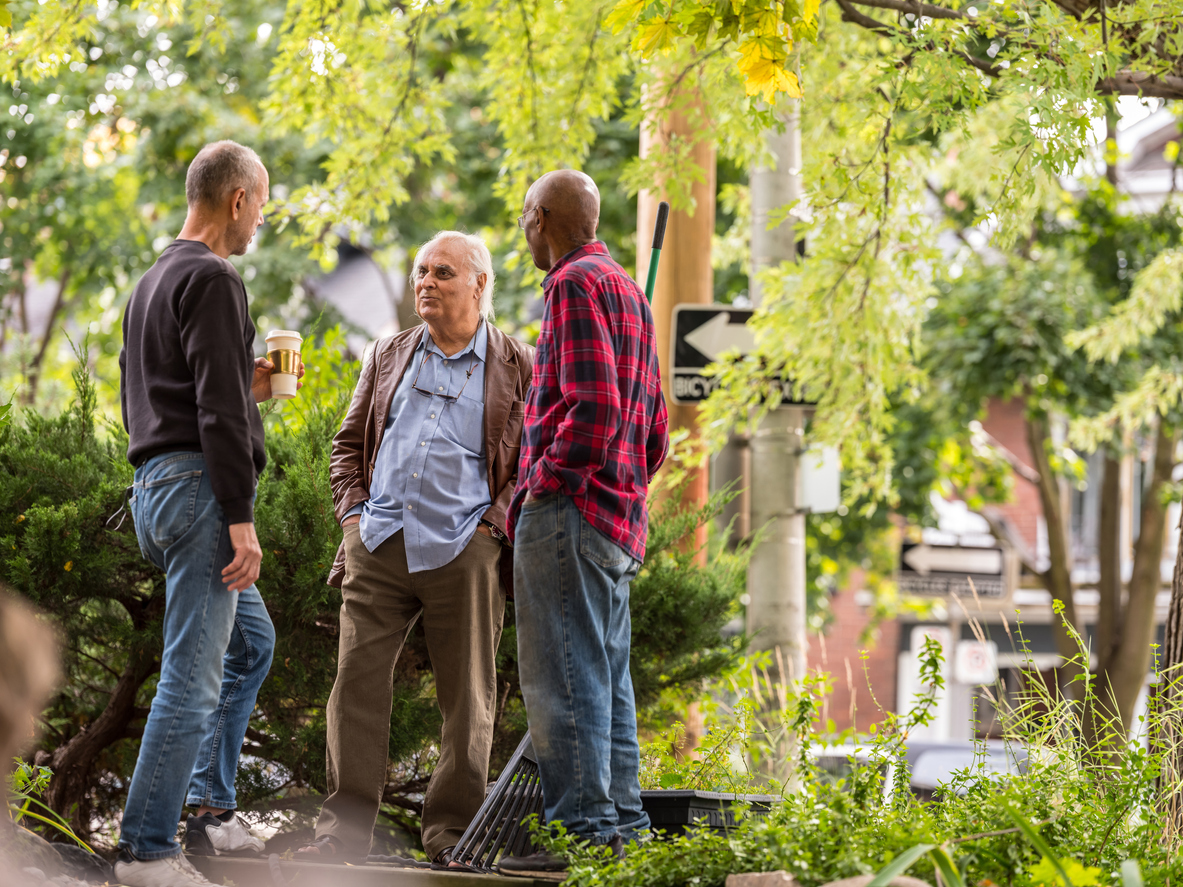

We may earn revenue from the products available on this page and participate in affiliate programs. Learn More ›
Is it okay to trim back your neighbor’s prized oak tree if its limbs start reaching into your yard? Who’s responsible for pruning the overgrown hedge that runs along your property line? What about that strip of grass between your properties that no one wants to claim when it comes time to mow the yard?
The question of who’s responsible for what when it comes to landscaping emerges where your property ends and your neighbor’s begins. While these conflicts can often be solved with a friendly conversation, sometimes they escalate into bitter disputes and lawsuits if neighbors can’t agree. Find out what you are and aren’t responsible for when landscaping starts creeping across property lines.
Take care of aging trees.
Laws vary from state to state, but, generally speaking, any tree whose trunk resides on your property belongs to you. If it falls on your neighbor’s house, whether or not you’re responsible depends on the tree’s condition.
While you won’t be liable if a healthy tree falls on your neighbor’s home as the result of a bad storm, you might have to foot the bill if you neglected to take care of a dead tree that was clearly threatening your neighbor’s house.
Get to the root of the problem.
Tree roots can grow into sewer lines, walkways, and even foundations, causing major problems. If the roots of a neighbor’s tree are causing damage to your property, you can’t force your neighbor to do anything about it, but you—generally-–have the right to remove them.
Keep in mind that cutting out those roots may kill the tree, which might upset your neighbor and even cause them to seek damages from you. Make sure you have proper documentation showing that the roots were indeed causing damage to your property before cutting them out.

Trim shrubs and trees with care.
While most people know they can’t enter their neighbor’s yard and begin chopping down offending trees or shrubs, many aren’t aware of the restrictions they have on trimming parts of trees and shrubs that encroach onto their property.
You have the right to trim a tree or shrub encroaching into your yard, but that doesn’t mean you can hack off every branch and limb that’s suspended in your air space. If you do so much trimming that it damages or destroys the tree, you’ll be liable for damages.
Be mindful of a growing problem.
One of the biggest mistakes people make when planting new landscaping is failing to consider just how big that little plant that came in a 3-gallon container might become. Be sure to check the mature width and height of any shrub before planting it in close proximity to your property line. If you plant a shrub that crosses that line, your neighbor has the right to trim it back.

Own those autumn leaves.
Though you may despise the mess your neighbor’s magnolia tree drops in your yard, it’s not their responsibility to clean it up. Any leaves, acorns, branches or cones that fall or blow onto your property from neighboring yards are your responsibility alone. And, just in case you were planning on returning them to their owner, blowing those leaves back into your neighbor’s yard is not an acceptable way to dispose of them.
Mow outside the lines.
Trying to gauge that invisible line that is the boundary between yards when you’re mowing the lawn can be a challenge. While many people appreciate a neighbor who takes that extra pass with the mower, those who are particular about the height of their grass may take issue with that practice of taking a mow over the property line. While you can install a fence to define the boundary, a better option may be to talk with your neighbor about a mutually agreeable solution.
Share the load with shrubs.
Boxwoods, holly, arborvitae, and other evergreen shrubs that grow tightly together are common property line boundaries. As with trees, when shrubs run directly over the property line, both parties are responsible for maintaining their respective sides. Plan a hedge trimming day once a year with your neighbor to ensure it has a uniform look from both properties.
Planting on the property line.

If you want to plant trees or shrubs on your property line, you’ll need to come to an agreement with your neighbor first. Unlike a fence, which is a static object, trees and shrubs are living things that will likely get wider as they grow, encroaching on the neighbor’s property. As such, both property owners need to consent to planting trees or shrubs that straddle the property line. Likewise, both parties must also agree when removing any trees or plants that sit on the property line.
Not feeling vine.
While we think mainly of trees when it comes to foliage that can damage property, other plants also have the potential to cause problems. Out of control vines such as kudzu and poison ivy can bring down fences and even damage walls. When this happens, it’s usually the responsibility of whoever owns those plants to take care of the damage.
Some municipalities even have ordinances that require residents to control invasive plants that originate on their property or face a fine. Before it gets that far, first try to work with your neighbor to either control or eradicate the offending vines.
Learn where to look to find the property lines.
Determining whether a tree, shrubs, or that disputed section of grass no one wants to mow are on your property or your neighbor’s property requires you to know the location of the property line.
There are a couple of ways to locate the property line: Some properties have metal pins in the ground that mark their boundaries. If you can’t locate pins, you may need to head to the local zoning department to get a copy of the plat information for your property.
